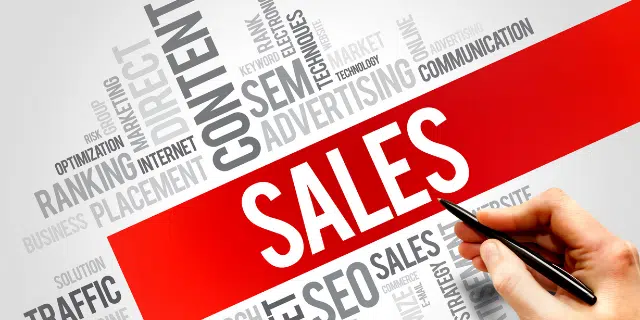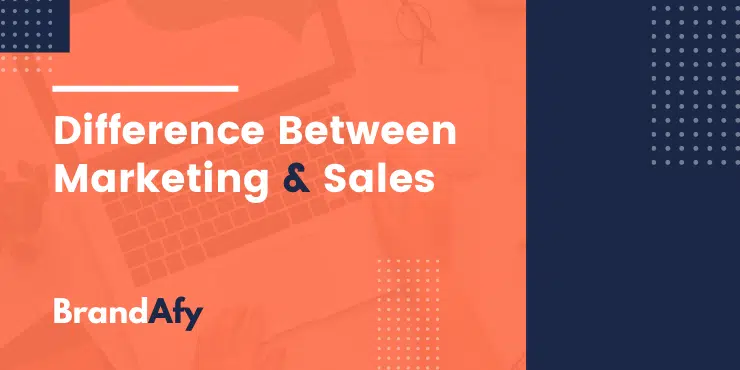Do you know the difference between marketing and sales? If not, you’re not alone. In fact, you may not have even given the difference much thought. Many people mix up marketing and sales because they seem to be very similar. It’s all about getting people to buy your product, right? However, they’re actually two different parts of running a business and it’s important to know the difference. Both marketing and sales play a crucial role in making money whether you’re an online business or a brick and mortar store. Although they do have their similarities, there are some distinct differences that are important to understand. In this article, you’ll learn everything you need to know about the difference between marketing and sales for your online business.
The Difference Between Marketing and Sales
While they are really similar and easy to get mixed up, the difference between marketing and sales is really quite simple. Marketing is done to build awareness about your company or product. This is often done via advertising, social media marketing, etc. to introduce and familiarize an audience with your product. Sales is the part where you actually sell the product, turning potential customers that you brought in with your marketing into actual, paying customers.
As you can see, both are important, but they are different steps in the customer journey and different parts of your business strategy. Now that we’ve cleared that up in the simplest way possible, let’s take a look at both marketing and sales in depth.
Marketing: Building Awareness

What exactly is marketing? The goal of marketing is to build awareness about your company or product. You want potential customers to know that your company exists and that you have a product or service that they might be interested in. More importantly, you want to be able to clearly show what your product is as well as what problem it solves for the customer to catch their attention and get them interested in knowing more. Simply knowing the product exists isn’t enough. Why does your target customer want to potentially purchase your product(s)? Getting these types of critical messages across to an audience clearly through your marketing is essential to any business’ success. This is why marketing is often referred to as the “awareness stage” because you’re making potential customers aware of both your company and product.
Marketing Strategies
Marketing as a concept is pretty simple: make sure people know about your product, what it is, and why they might want to buy it. But how does it work? What types of marketing strategies can you use to make sure this happens? There are a ton of different marketing strategies, but we’ll just introduce you to just a few of the most popular ones below.

● Advertising: This is probably one of the most common and well-known types of marketing. You’ve seen it everywhere, from billboards to commercials to paid ad banners on websites and social media. Advertising has been around for a long time and can be a great way to get your product in front of potential customers.
● Social Media Marketing: In today’s digital age, social media marketing is one of the most effective ways to reach your target audience. Platforms like Facebook, Twitter, and Instagram have billions of users that you can reach with just a few clicks. Social media marketing can be done through your brand or business account, or even through sponsoring other accounts that appeal to your target audience. The world of social media marketing is huge and always evolving.

● Content Marketing: Content marketing is a bit different from the other types of marketing on this list. With content marketing, you’re not explicitly selling your product. Instead, you’re creating content (usually in the form of blog posts, videos, etc.) that is helpful or educational for your target audience. The goal with content marketing is to build trust and authority with potential customers so that they’ll be more likely to buy from you when they’re ready.
There are endless marketing strategies that businesses can use to reach their target audiences. The ones we listed above are just a few of the most popular and commonly used ones, but it’s important that you experiment with different strategies and see what works best for your business.
Sales: Turn Potential Customers into Paying Customers

Now that you know what marketing is and how it can help your business, let’s move on to sales. Sales is the process of actually selling your product or service to customers. The main goal here is to actually make the sale. This is where you take potential customers who know about your product and are interested and turn them into real, paying customers. Sales is different than marketing because while marketing gets your business or product in front of your audience, sales is what actually gets them to pull the trigger and buy the product.
Sales Strategies
Sales strategies can vary based on the type of business you’re running, the products you offer, and what kinds of customers you’re targeting. In sales, connecting with potential customers to understand their wants, needs, and problems is a huge part of converting them into paying customers. When doing sales in person or over the phone, listening is a big part of the sales process. You want to make sure you understand what the customer is looking for and then be able to offer a solution in the form of your product or service.
However, things get a little trickier when it comes to online sales. Since you usually don’t get to speak with each customer that comes through your store, you need to find a way to connect with your customer without actually speaking to them one on one. But you can still use sales strategies to convert potential customers into sales by listening to your audience, answering their questions, and pitching to them through your website and product page. A well-written product page and website doesn’t just describe a product, it’s a sales pitch and a crucial piece for online sales.
Why You Need Both Marketing and Sales
You’ve probably already figured this out by now, but your business needs both marketing and sales to be successful. If you don’t have a good marketing strategy, no one will know about your product. And if you don’t have a good sales strategy in place, you won’t be able to sell your product even if people do know about it. By understanding the difference between marketing and sales, you can make sure you’re using both strategies effectively to grow your business.

Why are sales and marketing important for dropshippers?
Knowing the difference between sales and marketing is important for dropshippers for the same reason it’s important for any business. You need both effective marketing and sales strategies in place in order to bring in customers and make sales. Once you understand the difference you can figure out your own sales and marketing strategies to grow your own business. To make money dropshipping, implement and continually work on perfecting your marketing and sales strategy to bring in potential customers and then convert them into actual, paying customers.
Now that you know the difference between marketing and sales, you can start putting together a plan for your business that includes both.
Conclusion
If you’re still asking yourself “are marketing and sales the same thing?”, then the answer is a clear NO. Marketing places a clear focus on the strategy used to inform and attract customers. Sales focuses on strategies used to sell the product or service, usually after a lead or customer has engaged with marketing campaigns or strategies. In the end, sales and marketing work together.










